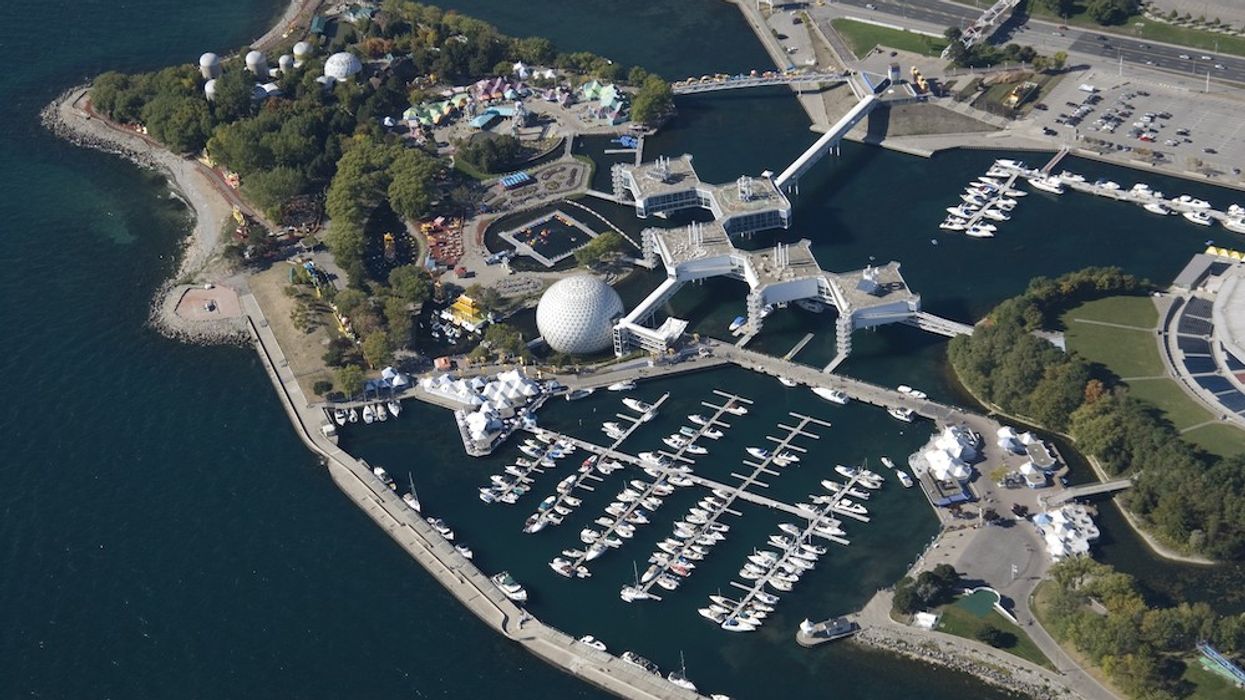Who chooses? Who decides what gets built and what doesn’t? Is it municipal politicians? Provincial politicians? City planners? Neighbours? Developers? Architects? All of the above? None?
Though never far below public consciousness, this question resurfaced again last month when urbanist and Toronto mayoralty candidate, Gil Penalosa, pledged to stop Premier Doug Ford’s controversial redevelopment plans for Ontario Place.
READ: The Ontario Place Revitalization is Out of Touch Say Heritage Advocates
Penalosa wasn’t the only one to object to Ford’s scheme. Indeed, since its unveiling last summer, the plan has been widely rejected, ridiculed and loudly scorned. It’s not hard to see why; the proposal would transform the 1970s people’s playground into a gaudy lakeside “attraction” better suited to Dubai, Baku or maybe Florida, those global hubs of architectural kitsch and cultural overreach. It includes a super-sized spa, a waterpark, an “entertainment zone” and double-digit admission costs.
Everything about the proposal is inappropriate. Even if it weren’t so crassly commercial, why would the province hand a significant swath of public land over to the private sector? Shouldn’t such desirable waterfront real estate be used for more community-minded purposes?
Again, who decides?
Ford’s faith in the corporate sector is hardly surprising given his years spent at his father’s label operation. And let’s not forget how excited he was in 2011 for a similarly ridiculous scheme. Back then, Ford, a Toronto city councillor, wanted to turn the Port Lands into an oversized funhouse with a shopping centre attached for good measure. The proposal was laughed off the stage, but it was an early example of the premier’s willingness to replace government with for-profit operations.
But why should Doug Ford have any say in the future of Ontario Place? It sits in the city on city-owned land.
And what about the only leader elected to speak for the whole city, Toronto Mayor John Tory? Apparently, he likes what he sees. Tory has talked often about his wish for something spectacular on the waterfront and for him this is it.
READ: The Strong Mayors, Building Homes Act: An Undemocratic, Housing Non-starter
Problem is that Torontonians appear to disagree with His Worship; they have been clear they want Ontario Place to remain public and fully accessible. They have also expressed a strong desire for a lakeside park.
This isn’t surprising; in the aftermath of the pandemic, Torontonians have new perspectives on city life. For example, parks long considered neighbourhood amenities have become regional draws. The hunger for green space and what we like to call “nature” is stronger than ever.
By contrast, the demand for the sort of noisy attraction promoted by Ford and Tory seems largely sated. When families can afford a day out, they have places like Canada’s Wonderland and the Ex. And, we should remember, when the newly beloved Ontario Place closed in 2012, the reason was plummeting attendance.
But to be blunt, it’s unlikely that either the premier or the mayor will be swayed by public opinion. Their electoral success guaranteed, they can safely ignore the polls. Democracy extends no further than election day.
In Tory’s case, it’s not because he is unaware Toronto needs more parks. When he rolled out Rail Deck Park, a 20-acre facility above the rail yards west of Spadina, south of Wellington, it was a response to the lack of green space in the downtown core. It would have gone some way to addressing that shortfall. Alas, that dream died in 2020 when the provincially empowered Local Planning Appeal Tribunal (LPAT) ruled against the city and upheld earlier plans to give the land to developers for condos.
The episode was yet another reminder that whoever makes the decisions, it certainly wasn’t the mayor or council, both of whom had already approved Rail Deck. Of course, the community also favoured a park over another thicket of residential towers. That meant nothing to LPAT.
For architects, the issue went no further than who was hired to design the towers. Keep in mind that the architects responsible for the Ontario Place monstrosity were Diamond Schmidt Architects, a venerable Toronto firm once known for its commitment to urbanism.
Although Toronto’s then Chief Planner, Jennifer Keesmaat, also supported Rail Deck, her department was left holding empty clipboards. And so “The City Within A Park” remains chronically short of parkland.
Already sounding like a politician, Penalosa suggested the proposed attraction be moved to a parking lot at Exhibition Place thus freeing Ontario Place for to become park space.
“Well over 1M people have visited Ontario Place over the pandemic,” Penalosa said in a statement released in early August, “proving the demand for a great public park. “As mayor, Gil Penalosa will work with Torontonians to protect Ontario Place from private interests and work with residents from across the city to design and build a signature green space for everyone across our waterfront.”
The next stop for Ford’s plan is the Waterfront Toronto Design Review Panel and after that the City Planning Department and the Toronto and East York Community Council. As history shows, however, their recommendations are just that – recommendations. No matter how many Torontonians are calling for the greening Ontario Place, the decision is not theirs to make.
Perhaps sensing that the Ontario Place remake has become a fiasco, one of the three firms chosen for the project, Quebec’s Écorécréo Group, withdrew in late August. Whether that spells the end of waterfront misadventure remains to be seen. In the meantime, the future of the Lakeside People’s Palace is anyone’s guess, if not their choice.





















